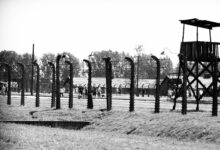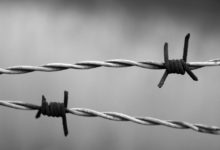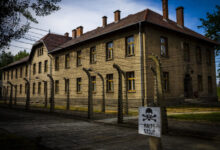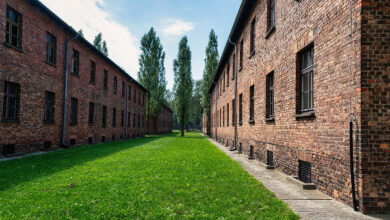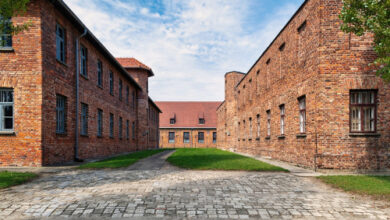Visiting the Auschwitz-Birkenau Memorial and Museum during Easter time offers a profound glimpse into one of the darkest chapters of human history. At Auschwitz I, the original camp, and Auschwitz II-Birkenau, the extermination camp, you have the sombre opportunity to understand the scale of the Holocaust and remember those who lost their lives.
Auschwitz Easter Tour through the impeccably preserved grounds reveals the stark realities of the camp’s function, its historical context, and the harrowing experiences of its prisoners.
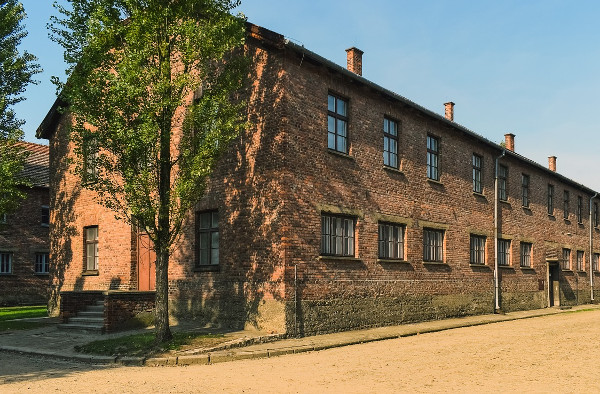
The exhibitions provide a well-documented narrative supported by original artefacts, documents, and personal accounts, enabling you to explore this significant piece of history with due respect and remembrance.
The Auschwitz museum is comprehensive in its coverage, ensuring that the lessons of the past are not forgotten.
As you plan your Auschwitz visit during Easter, be aware that the Auschwitz-Birkenau Memorial and Museum remains open throughout the year. But during few specific public holidays Auschwitz is closed for visitors. Note that Easter Sunday is one of the days when the museum is closed.
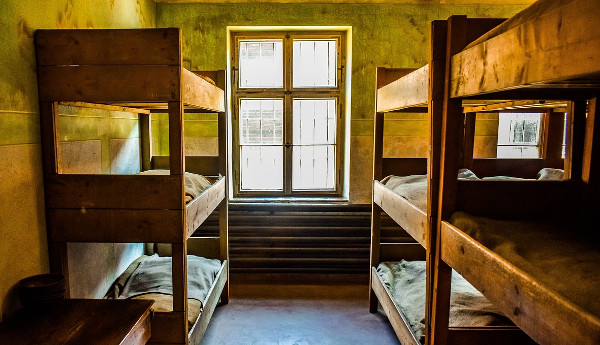
Accessibility to the site is adjusted seasonally, with Auschwitz opening hours extending in the warmer months to accommodate the influx of visitors reflecting on the memorial’s sombre legacy.
Table of Contents:
Planning Auschwitz Easter Tour

To ensure a seamless and respectful visit to the Auschwitz Memorial, familiarise yourself with the crucial details of scheduling, arriving at, and navigating the site.
Auschwitz Important Dates and Opening Hours
The Auschwitz Memorial is open year-round, seven days a week, with the exception of 1st January, 25th December, and Easter Sunday.
Visiting hours vary by month:
- April to October: Open from 7:30 AM; last entrance times are between 5:00 PM and 7:00 PM, depending on the month.
- November to March: Open from 7:30 AM; last entrance usually at 2:00 PM, allowing for on-site stay up until an hour and a half after the last admission.
Please reserve at least three and a half hours for your visit to ensure a thorough experience.
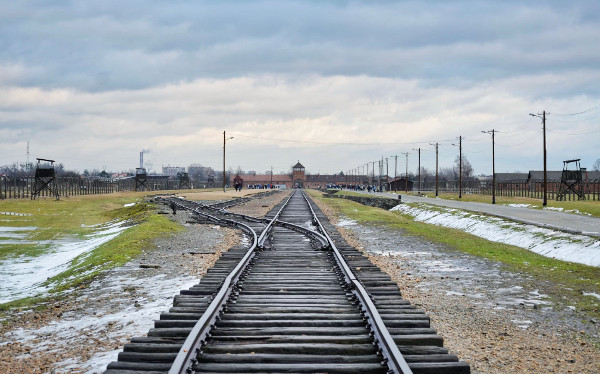
Read also:
Auschwitz Easter Admission and Booking
Entrance to the Auschwitz Memorial is free. However, you must book your entry passes in advance, especially during peak months from April to October.
For more information and to reserve a personalised entry pass, visit the official website at visit.auschwitz.org.
Getting to Auschwitz
The Memorial is located in Oświęcim, Poland. You can reach Auschwitz by:
- Public Transport: Buses and trains are available from major Polish cities to Oświęcim.
- Shuttle Bus: Operates between the Auschwitz I and Auschwitz II-Birkenau sites.
- Car: A paid car park is available for visitors driving to the Memorial.
Visitor Guidelines and Accessibility
Upon arrival, expect security checks; large backpacks or handbags are not allowed.
Always show solemnity and respect.
The site is partly accessible to disabled visitors, but it’s advised to contact the Memorial beforehand for specific arrangements.
Recommended articles to read:
Easter Auschwitz Tours and Educational Programmes
The Memorial offers multiple options for guided tours and educational programmes:
- Individual Visitors: You may explore individually or join a guided tour with an educator.
- Groups: It’s recommended to engage in a guided tour, which can be booked via the website.
- Online Guided Tours: Available as an alternative to on-site visits, conducted live by guide-educators.
Facilities and Services
During your visit, you’ll find:
- Luggage Storage: At the car park area.
- Toilets and Rest Rooms: Available on-site.
- Bookshops and Cafés: To purchase educational materials or refreshments.
Understanding Auschwitz
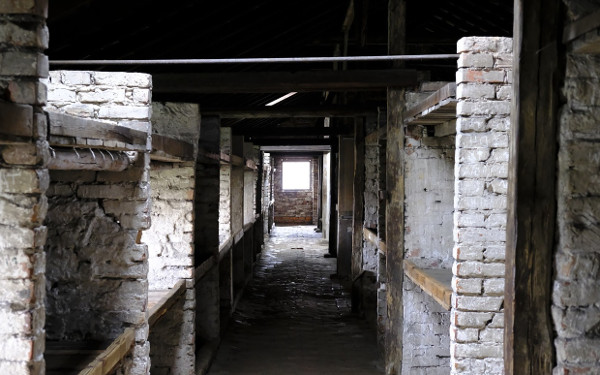
Auschwitz-Birkenau stands as a stark memorial to a harrowing period in history, essential for you to comprehend the scale and impact of the Holocaust. Read also Why visit Auschwitz? and How to get to Auschwitz from various Polish cities
Historic Significance
Auschwitz, originally established by German Nazis, is the most infamous of the concentration and extermination camps.
Between 1940 and 1945, it was the site of the largest mass murder, where over a million victims, including Jews, Poles, Roma, and prisoners of various nationalities were systematically exterminated.
Liberation of Auschwitz came on 27 January 1945 by the Soviet Red Army, a date now commemorated as International Holocaust Remembrance Day.
Auschwitz Exhibits and Displays
As you explore Auschwitz, you’ll encounter numerous buildings, including the remains of gas chambers and crematoria, which stand as evidence of the camp’s grim function as an extermination site.
Within the Auschwitz-Birkenau Memorial, you’ll find various exhibits that utilise multimedia materials, archival photographs, artistic works and original documents to convey the reality of life and death within the camp’s confines.
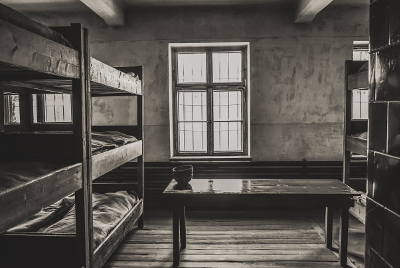
‘Kanada’, the nickname for the storage buildings, represents the immense personal belongings seized from victims.
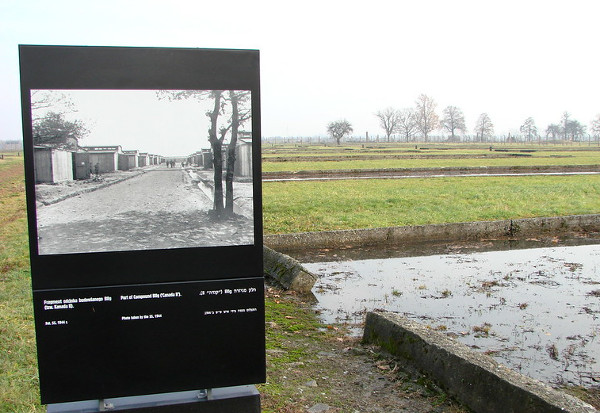
Survivors and Remembrance
Survivors play a crucial role in the remembrance of Auschwitz’s history. Their testimonies and memoirs are invaluable sources of insight into the daily reality of the camp.
As part of your Auschwitz Easter tour, you are participating in the act of remembering and honouring the victims, ensuring that the atrocities committed are neither forgotten nor repeated.
Auschwitz Easter Visiting Guidelines
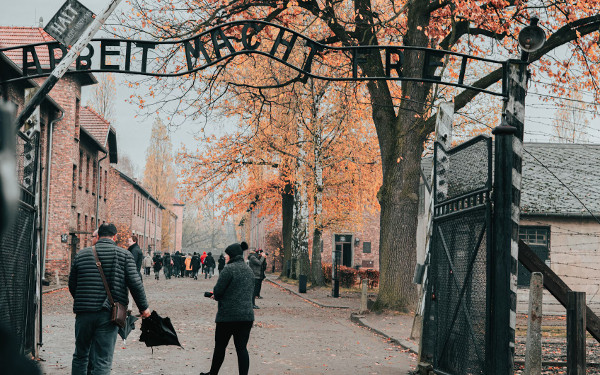
When planning a visit to Auschwitz during Easter, it is essential to adhere to the site’s visiting guidelines to ensure a respectful and secure experience.
Rules of Conduct
Security Measures: Upon arrival, you will undergo a security check. Backpacks, handbags, and luggage larger than 30x20x10 cm are not permitted inside the museum.
Storage facilities are available, but it is recommended to bring only essential items.
Behaviour: The site demands a level of solemnity and respect.
Photography is allowed for personal use except in designated areas, but without flash, stands, or selfie sticks.
Remember, the museum is a memorial to the victims, so maintain an appropriate demeanour at all times.
Visitor Tips
Language Availability: Guided tours are available in various languages.
It is advisable to book your tour at least two months in advance due to the high volume of visitors, especially around Easter.
Planning Your Visit: Check the museum’s official website for up-to-date opening hours as they vary by month.
The museum is closed on January 1, December 25, and Easter Sunday. For a more in-depth understanding, consider registering for a guided tour.
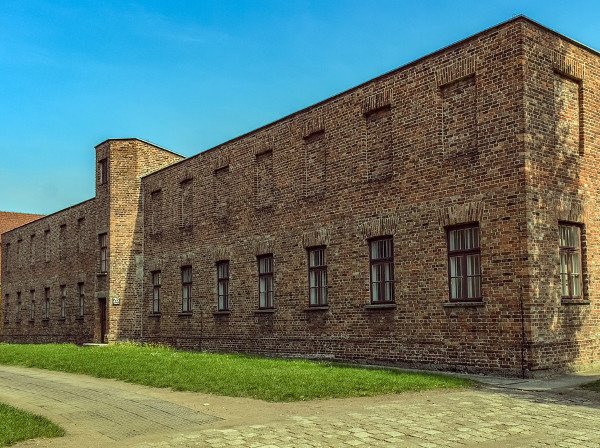
After Auschwitz Easter Tour
Once you have completed your Easter tour of Auschwitz, there are several ways to continue reflecting on your experience and learning more about the historical significance of the site.
Further Engagement
If you are looking to deepen your understanding that began with your visit, consider participating in a study tour or an extended programme.
These often involve more detailed sessions with an educator and can include intensive workshops that allow for comprehensive discussion and learning.
Staying in Oświęcim
Should you decide to extend your stay in the town of Oświęcim, there are accommodation options available for different budgets. Read also Where is Best to Stay for Visiting Auschwitz?
This can provide an opportunity for personal reflection or further exploration of the town’s history in relation to the Auschwitz Memorial.
Online Resources
The Auschwitz Memorial offers a repository of online resources for remote learning:
- “Auschwitz in front of your eyes” is an online tour detailing specific areas of the camp.
- Online guided tours facilitated by knowledgeable educators are available through the official website. These interactive sessions encourage interaction with the guide and asking questions to enhance your understanding.
- The Auschwitz Memorial Guide app is a personal companion for those wishing to explore the museum’s exhibits on an online individual visit.
These digital options enable you to engage with Auschwitz’s history from anywhere. They provide continuous educational opportunities beyond your physical visit.
